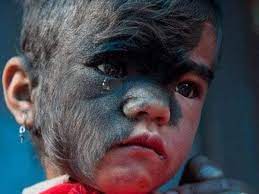
Although there is no universal definition of a rare disease, a disease is considered rare if it affects only a small proportion of the population. For example, in Europe, a disease is considered to be rare if it affects 1 in 2000 people; in the USA, 1 in 1600; and in Japan, 1 in 2500. In India, the Organization of Rare Diseases suggests a disease to be rare if it affects 1 in 5,000 people or less. Generally, three factors—total number of people having the disease, prevalence, and non-availability of treatment—are considered to define a rare disease. As per the WHO, a rare disease should be defined as one with frequency of less than 6.5 – 10 per 10,000 people.
In the United States, CDISC (Clinical Data Interchange Standards Consortium) and the National Organization for Rare Disorders (NORD) are collaborating to develop global data standards for rare diseases. Currently, NORD’s Rare Disease Database provides brief introductions to 1200 rare diseases. A branch of the US National Institutes of Health, the Genetic and Rare Diseases Information Center (GARD), also provides current information about rare or genetic diseases. As many as 7,000 rare diseases exist that affects over 350 million people worldwide, 50% of whom are children. While there could be many causes of rare diseases, the majority is believed to be caused by changes in genes or chromosomes. About 90% of the known rare diseases still lack treatment.
Some Rare Diseases Seen in Nepal

- Congenital Hypertrichosis Lanuginosa
A November 6, 2013, report on Buzzfeed News showed photos of a 38-year-old Nepali woman of Dolakha district and three of her children suffering from a very rare disease called Congenital Hypertrichosis Lanuginosa (Werewolf syndrome) that causes excessive body hair growth. The incidence of CHL is estimated to be 1 in 1 billion, with only 50 people having the disease since the Middle Ages.

Osteogenesis imperfecta
On April 8, 2015, Discovery Life (https://bit.ly/3aX9BD3) reported about four sisters, aged 8 to 19, living in the hilly region of Nepal, who suffered from this rare disease, also known as brittle bone disease, where the bones are fragile and fracture easily. It occurs in 1 out of 15,000 to 20,000 births.
3. Osler-Weber-Rendu disease
A person was diagnosed with Osler-Weber-Rendu disease (a.k.a. hereditary hemorrhagic telangiectasia), an autosomal dominant genetic disorder affecting blood vessels throughout the body, at Civil Service Hospital, Kathmandu, in 2018 (The Himalayan Times, March 30, 2018, https://bit.ly/3tbj0x8). The most common symptom of the disease is spontaneous and recurrent nosebleeds. Its global rate of occurrence is about 1 in 5000.
4. Xeroderma pigmentosum (XP)
A genetic disorder in which there is decreased ability to repair DNA damage caused by ultraviolet light, resulting in severe sunburn after only a few minutes in the sun, freckling in sun exposed areas, and dry skin and changes in skin pigmentation. Other complications are hearing loss, loss of cognitive function, and seizures, as well as a high risk of skin cancer and cataracts. A study (Clinical and genetic characteristics of xeroderma pigmentosum in Nepal, P Espi , S Parajuli , M Benfodda, ,et al, Pub Med, May 2018) concluded that, “Although not previously reported, XP seems frequent in Nepal.” In the US and EU, its prevalence is 1 in 1,000,000, while in Japan, it is 1 in 22,000.
5. Anencephaly
A fatal disease, anencephaly is the absence of a major portion of the brain, skull, and scalp that occurs during embryonic development. The “Doctors Story Nepal” Facebook page, on April 16, 2018, reported about a baby born with anencephaly at Nepal Medical College two years before. A study (Burden and consequence of birth defects in Nepal-evidence from prospective cohort study, Prajwal Paudel, Avinash K. Sunny, Rejina Gurung et al, BMC Pediatrics, Feb 15, 2021, https://bit.ly/3xCjpMu) found that among a total 87,242 live births, the prevalence of birth defects was 5.8 per 1000 live births, with anencephaly at 3.95 percent. Globally, it affects 1 in 1000 pregnancies.
6. Rare fungal disease
The Kathmandu Post, on Jan 26, 2016, reported about an11-year-old boy of Baglung district who suffered from an extremely rare fungal disease that had completely disfigured him, and was getting worse with time. (https://bit.ly/3udBnTk)
7. Metabolic disorders
There are 1,300 known metabolic disorders, each of which is rare individually. Encyclopedia of Genetics, 2001, defines them as “inborn errors of metabolism, encompassing deficiencies in enzymes involved in the metabolism of carbohydrates, amino acids derived from proteins, and fatty acids liberated from lipids.” A study (Case reports of metabolic disorders from Nepal, Arti Sharma Pandey, Molecular Genetics and Metabolism Reports, Dec 19, 2019, https://bit.ly/3xGq5sX) found the prevalence of metabolic disorders to be about 0.0015% in Nepal, among which Glucose 6 phosphate dehydrogenase deficiency, oculocutaneous albinism, lysosomal storage disorders, cobalamin deficiency, Wilson’s disease, and factor X deficiency were more prevalent.
8. Hemoglobinopathies
It is a group of inherited disorders where there is abnormal production or structure of the hemoglobin molecule. Sickle cell is the commonest cause of hemoglobinopathy in Nepal, followed by B thallesmias, with sickle cell more concentrated in the Tharu population of western Nepal (Distribution of Hemoglobinopathy in Nepalese Population, Rekha Manandhar Shrestha, Roshan Pandit, et al, J Nepal Health Research Council, April 20,2018, https://bit.ly/3gWhDA2) Sickle cell affects 0.6 percent of the African American population in the United States, while in Europe, the pooled birth prevalence is 1/2,300.
Five Most Common Rare Diseases in the World
1. Multiple sclerosis (90 patients per 100,000 people) is an autoimmune disease where the body creates antibodies against itself, damaging the myelin of nerves and causing problems with vision, arm or leg movement, sensation, and balance. MS is two to three times more common in women than in men. Four types of MS have been identified, with 85% suffering from relapsing-remitting multiple sclerosis, where the first signs are seen in the early 20s, which develops to secondary progressive MS after 10-20 years, where there are no relapses or remissions in symptoms. There is currently no cure for MS, which resulted in 38 deaths, or 0.02% of total deaths, in Nepal in 2018, according to WHO data (https://bit.ly/3nE3PLN).
2. Narcolepsy (50 per 100,000) is characterized by excessive daytime sleepiness (EDT), with the five main symptoms being cataplexy (weakness of the muscles), hallucinations, EDT, sleep paralysis, and sleep disruption (CHESS). It is thought to be due to a lack of a brain chemical, hypocretin (also known as orexin), which regulates sleep. There are two types of the disorder; type 1 includes both EDT and cataplexy, while type 2 does not include cataplexy. There is no specific cure for narcolepsy.
3. Fabry disease (30 per 100,000) is an inherited X-linked lysosomal disorder, where there is deficiency or absence of alpha-galactosidase A, an enzyme needed to break down fatty substance. As a result, a certain type of fatty substance (globotriaosylceramide) builds up in the cells, narrowing the blood vessels, affecting the kidneys, heart, and skin, and nervous system. There is no cure; however, enzyme replacement therapy helps to break down the fatty substances, while the migalastat (Galafold of Amicus Therapeutics) stabilizes amenable mutant forms of α-galactosidase A, thus increasing its lysosomal activity.
4. Primary biliary cholangitis (40 in 100,000) is an autoimmune disease where there is slow, progressive destruction of the intrahepatic bile ducts, causing cholestasis (build of bile and other toxins in the liver), that may eventually lead to fibrosis and cirrhosis. It is nine times more common in women than in men. There is no cure for PBC.
5. Cystic fibrosis (25 per 100,000) is an inherited progressive disorder that affects cells producing mucus, sweat, and digestive juices, resulting in thick, sticky secretions that can cause severe damage to the respiratory and digestive systems by clogging the lungs and obstructing the pancreas. There is no cure, with treatment consisting of good nutrition and improving mucus expectoration.
Some other better-known rare diseases
1. Hemophilia: Usually an inherited bleeding disorder where the blood does not clot properly, it can lead to spontaneous bleeding, as well as bleeding following injuries or surgery. Hemophilia A (classical hemophilia) is caused by insufficient levels of a blood protein called factor VIII. It affects 1 in 5,000 to 10,000 males, whereas hemophilia B, which is caused by missing or defective factor IX clotting protein, affects 1 in 25,000 to 30,000 males, and hemophilia C, which is caused by missing or defective factor XI clotting protein, is estimated at 1 in 100,000 (males and females). In Nepal, there are around 600 people diagnosed with hemophilia (Nepal Hemophilia Society, https://bit.ly/3taJIpM)
2. Spinal muscular atrophy: A genetic disorder characterized by weakness and wasting of skeletal muscles, it mostly affects infants and children, but can also develop in adults. Type 1 (Werdnig-Hoffman disease) is the most severe and occurs in about 60% of those with SMA, with symptoms like difficulty in swallowing and sucking appearing at birth or within the first six months; Type 2 (Dubowitz disease) appears when a child is between six months and 18 months old and tends to affect the lower limbs; Type 3 (Kugelbert-Welander disease) appears after a child’s first 18 months of life, with symptoms like mild muscle weakness, difficulty walking, and frequent respiratory infections; Type 4 doesn’t typically appear until the mid-30s, with slow progression of muscle weakness symptoms. SMA affects 1 out of 6,000 to 10,000 children. Two new treatment options have recently been developed — a gene replacement therapy called Zolgensma (previously AVXS-101) and a drug called nusinersen (brand name Spinraza) (Boston Children’s Hospital, https://on.bchil.org/3e7Hmng)
3. Retinal dystrophies: Chronic and progressive disorders of visual function, common presentations include night or color blindness, tunnel vision, and eventual progression to complete blindness. These conditions can cause damage to the cones (responsible for detailed vision and color), rods (responsible for night and peripheral vision), or both at the same time (Stargardt disease, cone-rod dystrophy). They affect less than 1 in 2000 people. There is currently no cure.
4. Pulmonary arterial hypertension: A progressive disorder characterized by high blood pressure in the arteries of the lungs, causing the tiny arteries of the lungs to become narrowed, blocked, or destroyed. Symptoms may be dyspnea, fatigue, syncope, chest pressure/pain, edema in the ankles and legs, eventually in the abdomen (ascites), and cyanosis. Depending on the cause, there are five groups of pulmonary hypertension (PH): pulmonary arterial hypertension, PH due to left heart disease, PH due to chronic lung disease and/or hypoxia, chronic thromboembolic pulmonary hypertension (CTEPH), and PH due to unknown causes. According to a study (Pulmonary hypertension in Nepal: a hidden disease, Mrigendra Bastola, Salina Gairhe, PVRI Chronicle, U.K., https://bit.ly/3xAMAj1), a high prevalence of PH can be expected in Nepal due to high prevalence rates of rheumatic heart disease, COPD, smoking, and indoor pollution. There’s no cure for pulmonary hypertension, but treatment helps reduce symptoms.
5. Cushing syndrome: An endocrine disorder that occurs when the body makes too much of cortisol hormone (a.k.a. stress hormone) over a long period of time, it affects 10 to 15 people per 1,000,000 each year, usually between 20 and 50 years of age, with women accounting for more than 70% of cases. Symptoms may include obesity, rounded face, increased fat around the neck, purple striae on the skin, and slender arms and legs. Abnormally high blood pressure occurs in about 85% of those affected, with hyperglycemia also being seen in many. The cause could be either exogenous (long-term administration of a cortisol-like drug therapy to treat another medical condition) or endogenous (about 70% of Cushing syndrome is the result of Cushing disease, which occurs due to excessive ACTH production from a benign pituitary tumor, resulting in excessive cortisol production.. Treatment is related to the cause of the cortisol overproduction, and may consist of surgery to remove pituitary tumors, radiation, chemotherapy, and/or immunotherapy.
Rarest Diseases in the World
1. Ribose-5-phosphate isomerase (RPI) deficiency: It is caused by mutations in ribose-5-phosphate isomerase. Only three patients have been diagnosed so far. The first case was seen in 1999, a 14-year-old boy with developmental delay, insidious psychomotor regression, epilepsy, leukoencephalopathy, and abnormal polyol metabolism. The second case seen was an 18-year-old man with seizures, psychomotor regression, and diffuse white matter abnormality, while a third case was reported in 2018, a child with neonatal onset leukoencephalopathy and psychomotor delays.
2. Fields Condition is a progressive neuromuscular disease that causes muscular degeneration, affecting the nerves and causing painful muscle spasms up to 100 times every day. There are only two diagnosed cases, twin Welsh sisters Kirstie and Catherine Fields, who spend most of their time in wheelchairs and have difficulty writing and performing other delicate tasks.
3. Kuru is caused by a type of protein called prions that induces building up of abnormal brain tissue, leading to progressive and incurable brain damage. This disease has only been seen in a tribe of a remote region of New Guinea, who ate the brains of the dead as part of a funeral ritual, thus facilitating transmission of the disease, since eating the brains of an infected victim is the only way for it to be transmitted.
4. Methemoglobinemia (congenital or acquired), is characterized by an abnormal amount of methemoglobin, a type of hemoglobin that is transformed to carrying iron. While 1% methemoglobin is the usual norm in the blood stream, sufferers of this disease have 10 to 20% methemoglobin, and because the hemoglobin carries more of iron and only a reduced amount of oxygen, sufferers are at greater risk of developing heart abnormalities, having a seizure, or dying prematurely. Also known as Blue Skin Disorder, cyanosis is a major symptom. A single family in Kentucky, the Fugates, appears to have passed the genetic trait down the line for some 200 years.
5. Hutchinson-Gilford Progeria affects about one in every eight million children, causing the appearance of rapid aging beginning in early childhood, with symptoms like baldness, disproportionately large head, limited range of motion, and in many cases, hardening of the arteries. Till date, only about 100 cases have been documented, with just a few living into their twenties.
6. Alkaptonuria: Also known as Black Bone Disease, it occurs in 1 in 250,000-1,000,000 live births. An inherited metabolic disorder, it is characterized by the accumulation of homogentisic acid in the body, with those affected having dark urine or urine that turns black when exposed to air. Accumulation of homogentisic acid in connective tissue leads to a condition called ochronosis, in which the connective tissue turns blue, grey, or black.
7. Ogden syndrome: Also known as NAA10-related syndrome, it is a neurodevelopmental disorder presenting as postnatal growth failure, delayed psychomotor development, dysmorphic features, and hypotonia. Till date, only 85 families have been diagnosed with this disease.
8. KAT6A syndrome: Another genetic neurodevelopmental disorder, as of 2020, only 300 people have been diagnosed with this syndrome.
9. Adult-onset Still’s disease (AOSD): A rare type of arthritis, it typically affects adults under thirty-five. Research suggests that infection or toxic substances can trigger the immune system to overreact, resulting in episodes of spiking fevers, a pink or salmon colored rash, joint pain, muscle pain, and sore throat. Its prevalence is less than 1 in 100,000 every year.
Rare Diseases Drug Development
In the United States, the National Institutes of Health (NIH) funds medical research for rare diseases (also known as orphan diseases), while the Office of Orphan Products Development (OOPD) provides incentives for companies to develop treatments (orphan products/drugs), because such drugs are not considered financially sustainable due to the small number of affected patients. Less than 10 such treatments were approved between 1973 and 1983; after the creation of the Orphan Drug Act of 1983, the OOPD program has helped develop hundreds of such drugs and biologic products, out of which, as of 2018, 780 have received FDA approval for 250 rare diseases.
Major participation of big pharma has given added momentum, with about 1000 clinical trial underway today. In 2018, the top 10 companies in terms of orphan drug sales were Celegene, Roche, Novartis, Johnson & Johnson, Amgen, Sanofi, Pfizer, Alexion, Takeda, and BMS. Expectedly, the US is the leading player, with 50% market share of the potentially $300 billion global orphan drug market, 35% of which is dominated by oncology.
The leading company in orphan drug sales is Celgene, which is known for its innovative drug Revlimid (lenalidomide), an immune modulating therapy for the treatment of multiple myeloma (a blood cancer affecting the plasma), and for maintenance therapy following an autologous hematopoietic stem cell transplant (auto-HSCT). BioMarin’s Naglazyme (galsulfase), an enzyme replacement therapy for mucopolysaccharidosis VI, and Alexion’s Soliris (eculizumab), for treatment of atypical hemolytic uremic syndrome (aHUS) and paroxysmal nocturnal hemoglobinuria (PNH), achieved the highest revenue per patient per year, in 2018.
 Medicosnext
Medicosnext



